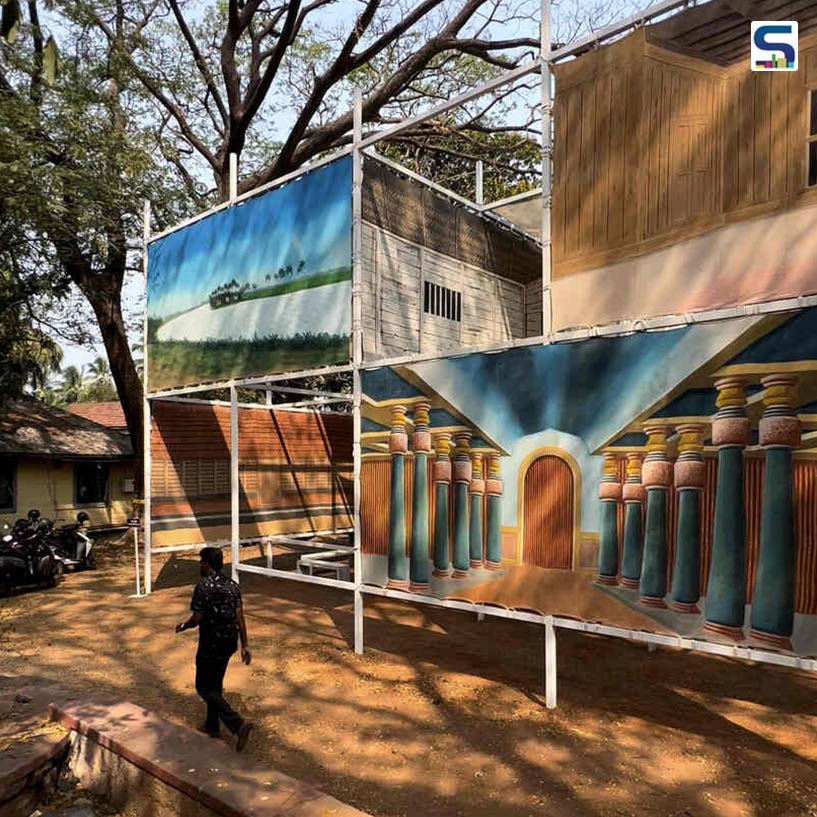
The 'BEHIND the SCENES' pavilion, designed for the prestigious ITFOK (International Theatre Festival of Kerala), shines a spotlight on the retrospective works of acclaimed scenic artist 'Artist Sujathan'. Constructed efficiently with MS box sections and kora cotton cloth, the pavilion reflects a commitment to sustainability, with surplus materials repurposed to minimize waste. Lijo Reny provides further insights into this project for SURFACES REPORTER (SR).
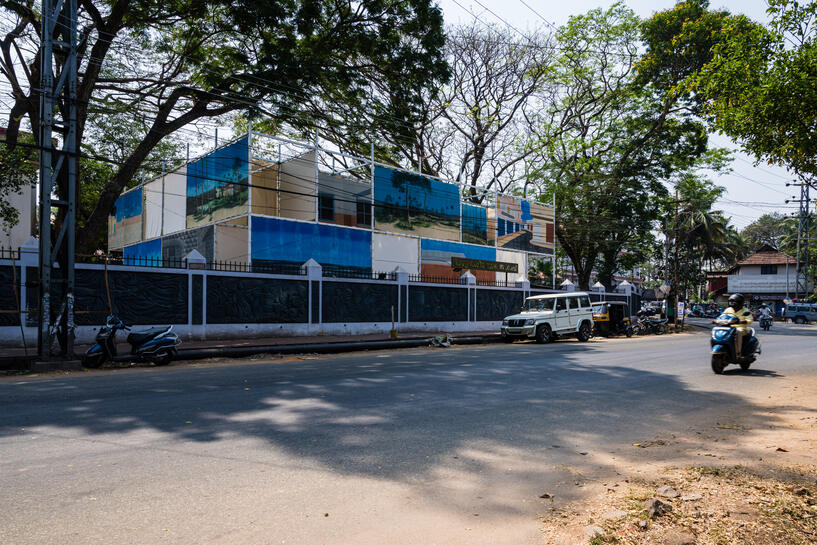 The pavilion pays tribute to the renowned, 'Artist Sujathan, whose five-decade career has significantly impacted Kerala's theater scene. With over 4000 productions to his credit, Sujathan's traditional painting technique has earned him numerous accolades, including 15 State awards and a fellowship from the Sangeetha Nataka Akademi.
The pavilion pays tribute to the renowned, 'Artist Sujathan, whose five-decade career has significantly impacted Kerala's theater scene. With over 4000 productions to his credit, Sujathan's traditional painting technique has earned him numerous accolades, including 15 State awards and a fellowship from the Sangeetha Nataka Akademi.
Versatile Space Design
The pavilion was meticulously designed not just as a temporary gallery for displaying select backdrops from iconic Malayalam dramas, but also as a versatile space capable of hosting various events such as artist discussions, musical evenings, and theater talks, while also providing a tranquil retreat from the sun.
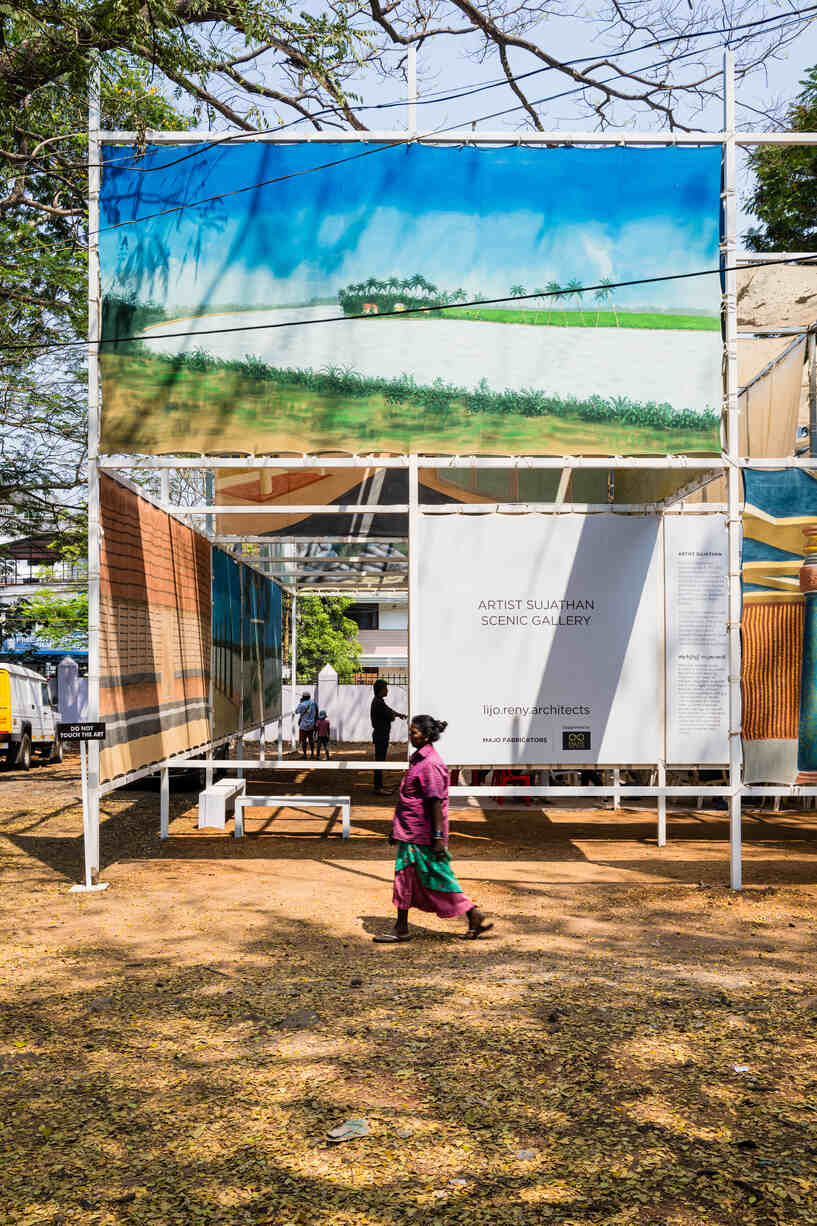 Resembling a radiant lantern at dusk, the pavilion serves as a beacon of excitement during the festival, its exterior adorned with hints of the theatrical backdrops it houses, blurring the line between indoors and outdoors.
Resembling a radiant lantern at dusk, the pavilion serves as a beacon of excitement during the festival, its exterior adorned with hints of the theatrical backdrops it houses, blurring the line between indoors and outdoors.
Inspired Spatial Experience
With a design inspired by traditional festival structures, the pavilion creates a unique spatial experience, inviting visitors to engage with the artworks in a distinctive manner.
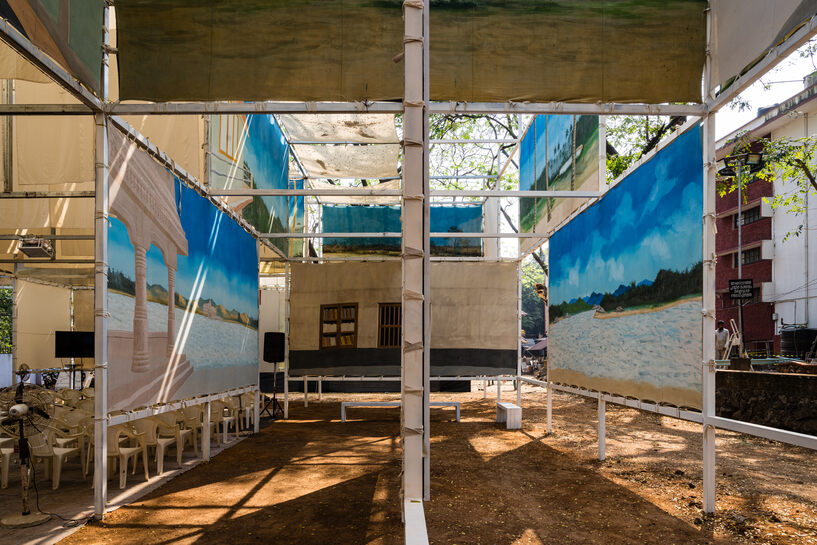 It pays homage to past 'meet the artist' events held beneath the canopy of trees, incorporating elements such as fabric-covered roofs to mimic the play of sunlight and shadows.
It pays homage to past 'meet the artist' events held beneath the canopy of trees, incorporating elements such as fabric-covered roofs to mimic the play of sunlight and shadows.
Cost-Effective Materials and Eco-Friendly Approach
The pavilion was primarily constructed using two cost-effective materials: MS box sections formed the framework, while kora cotton cloth, commonly used in theatrical backdrops, was utilized for the panels and tapes to facilitate their installation onto the frame. Interior lighting was provided by LED profile lights generously loaned by a local company. This economical approach was driven by budget constraints and the need to complete the structure within a tight seven-day timeframe. Additionally, any surplus box sections were repurposed to create benches, minimizing waste.
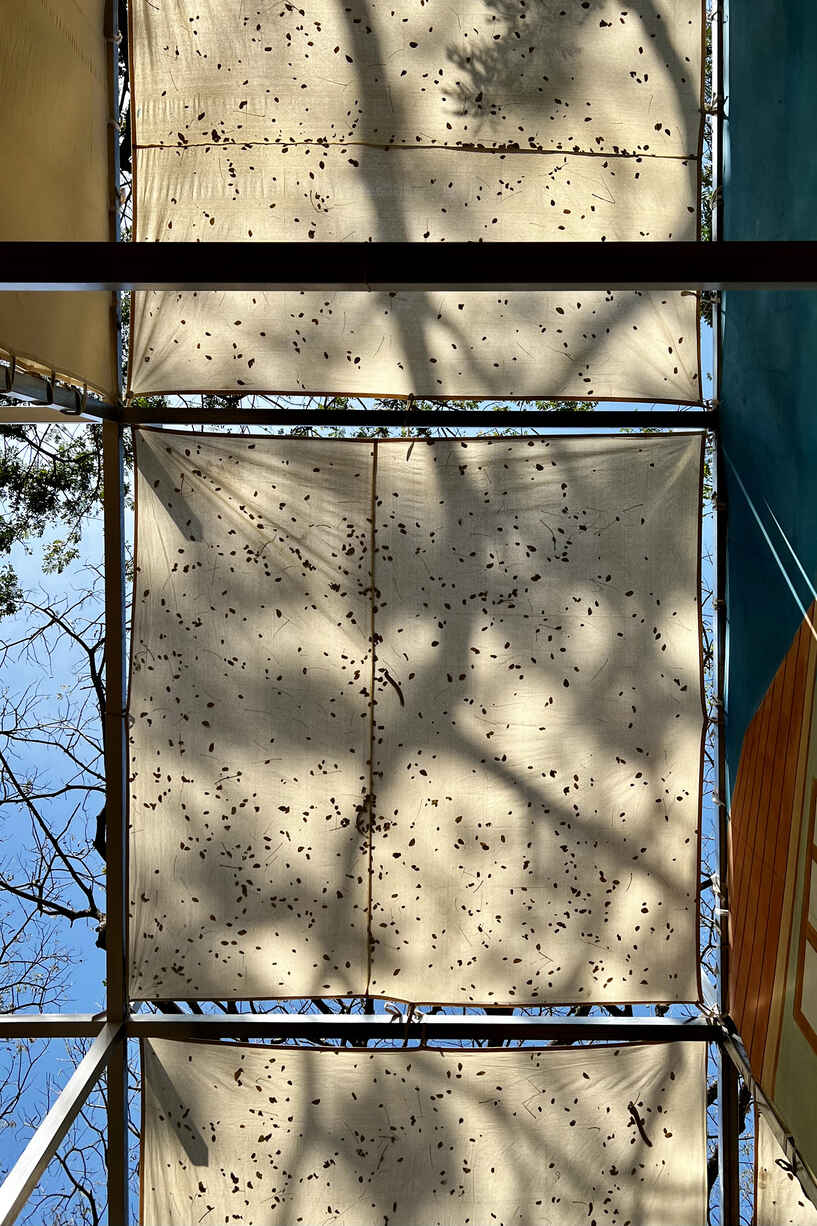 The dimensions of the structure were informed by typical sizes used in professional theatrical backdrops in Kerala, measuring 20' x 10' and 10' x 10'. Scenographic backgrounds, blank panels, and a fabric canopy were all attached to the frame using cloth tapes, a method commonly employed by theatrical backdrop and prop erectors for easy removal and to reduce the risk of damage. The fabric drapes suspended above the central space, reminiscent of theater curtains, served to soften harsh afternoon sunlight and added a dynamic visual element, distinguishing this area from the rest of the space.
The dimensions of the structure were informed by typical sizes used in professional theatrical backdrops in Kerala, measuring 20' x 10' and 10' x 10'. Scenographic backgrounds, blank panels, and a fabric canopy were all attached to the frame using cloth tapes, a method commonly employed by theatrical backdrop and prop erectors for easy removal and to reduce the risk of damage. The fabric drapes suspended above the central space, reminiscent of theater curtains, served to soften harsh afternoon sunlight and added a dynamic visual element, distinguishing this area from the rest of the space.
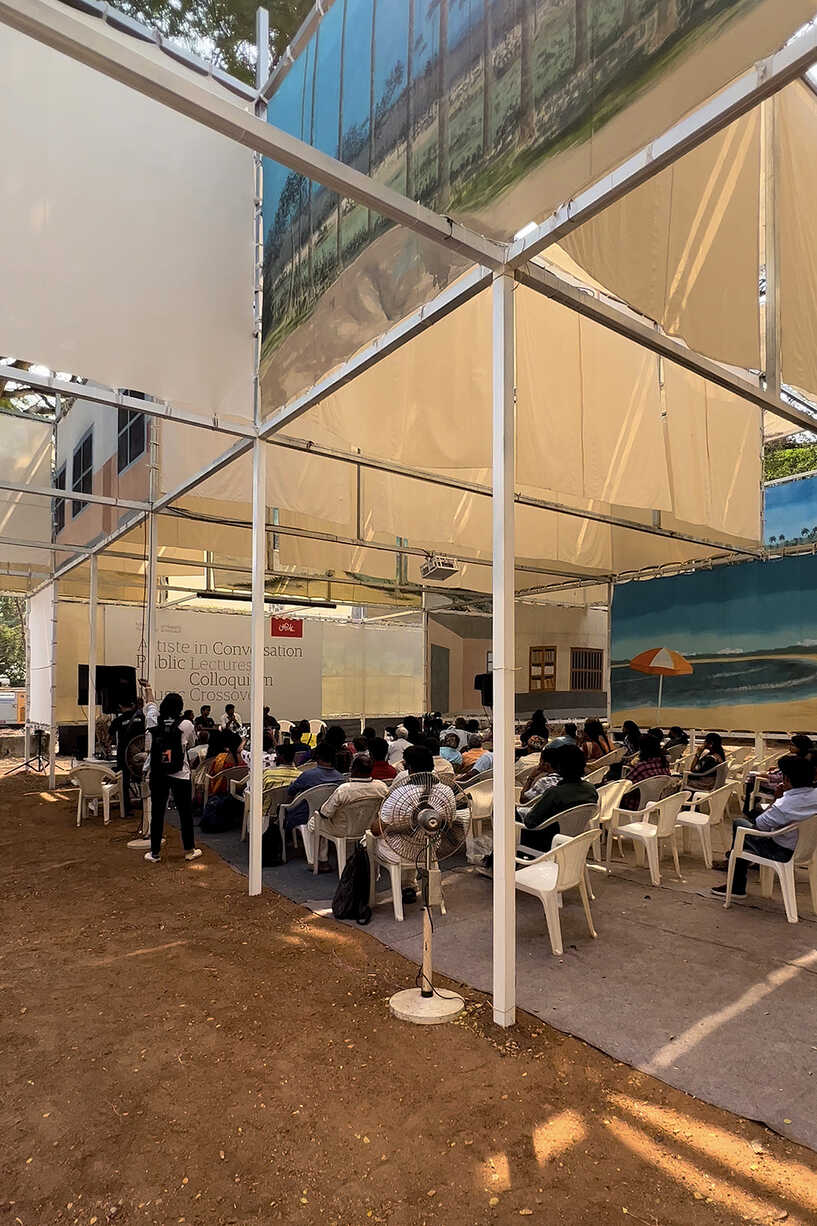 Afterward, the MS tubes from this project were reused to build the roof of a nearby building on the same campus. Furthermore, the artist kept the white Kora cloth used for blank panels to craft fresh backdrops for future theatrical performances.
Afterward, the MS tubes from this project were reused to build the roof of a nearby building on the same campus. Furthermore, the artist kept the white Kora cloth used for blank panels to craft fresh backdrops for future theatrical performances.